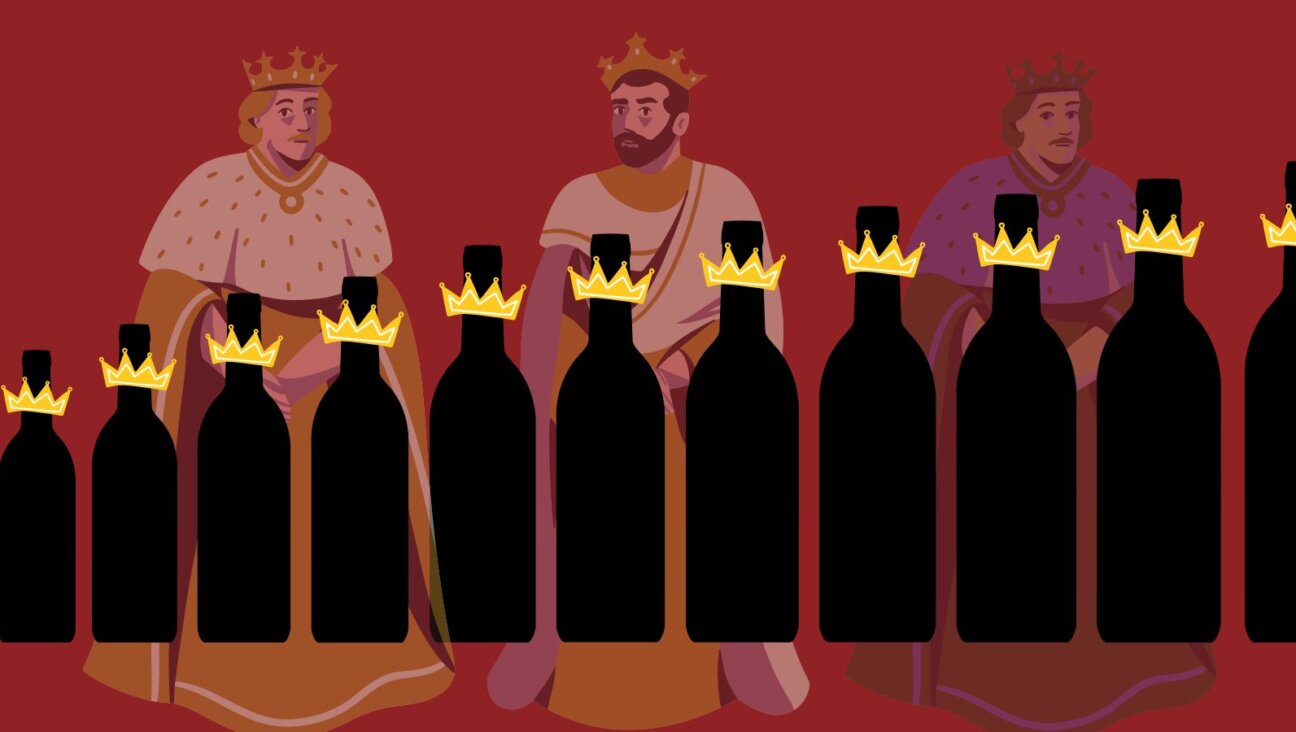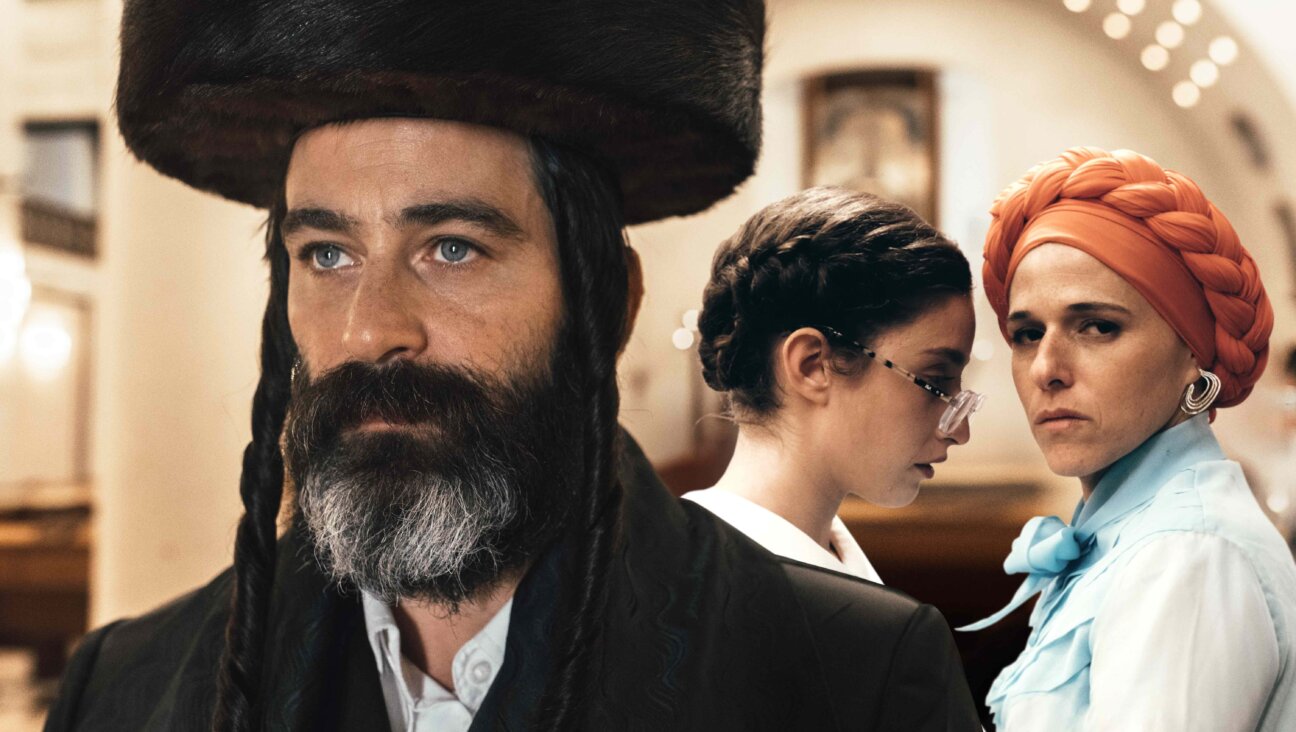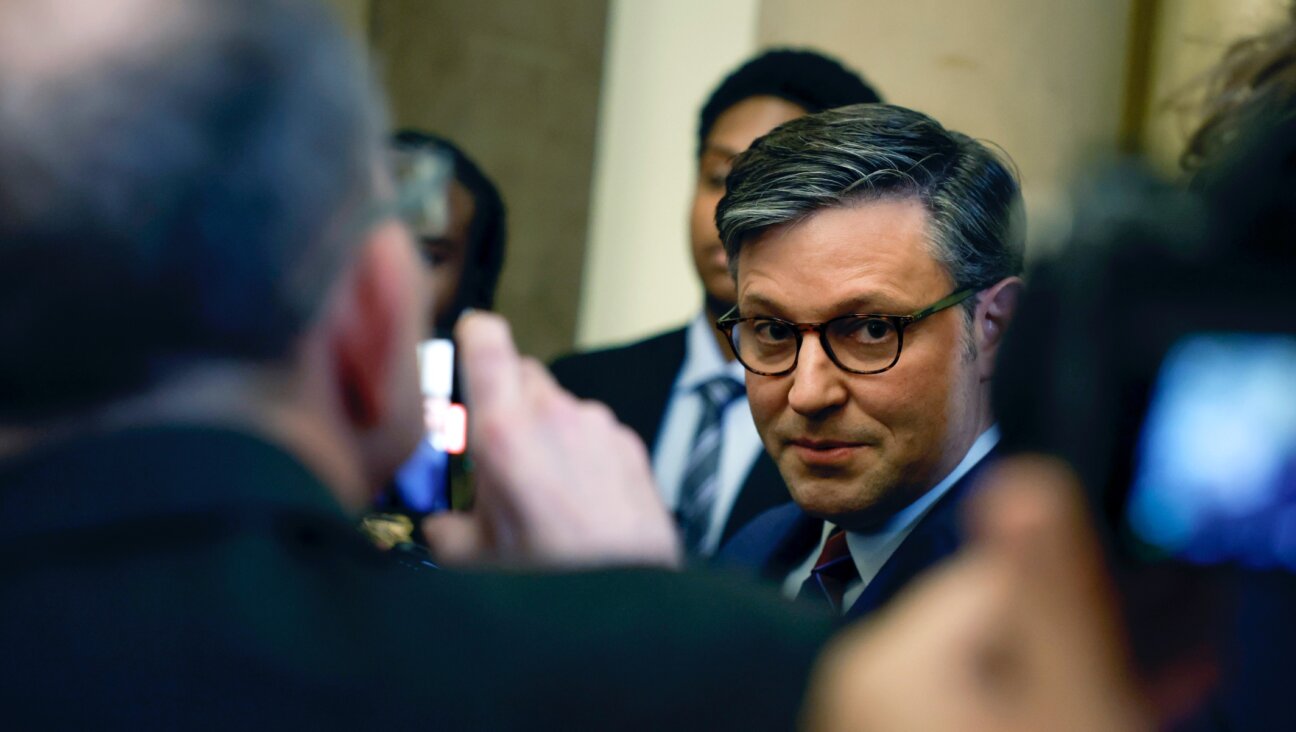Honoring His People, By Design

An Artist?s Work: After decades out of the public, Norman Gorbaty?s Jewish-themed painting and sculpture work is now on view at the Walsh Gallery at Fairfield University. Image by Shelley Kaiser
Norman Gorbaty gestures at the dozens of his artworks lining the walls of the Walsh Gallery at Fairfield University.
“The reason for this kind of stuff,” he says, referring to the Jewish-themed subject matter, “is there’s so many things I’m finding out in Judaism that I think Jews don’t know about.”
Ironically, had it been left to Gorbaty, viewers still wouldn’t know about them. The hundreds — more likely thousands — of secular-themed artworks and more than 100 with Jewish themes that he has created over more than 50 years had never been seen by the public — Jewish or otherwise — until the past few years. “To Honor My People” is the first exhibition of his Jewish-themed work alone.
After receiving training at Yale, with artist Josef Albers and architect Louis I. Kahn, and a promising artistic start with work in the 1954 Young American Printmakers show at the Museum of Modern Art in New York, Gorbaty decided in 1956 to forgo the unpredictability of an artist’s life. Instead, he chose the relative stability of a Madison Avenue design career in order to support his family.
For decades, his days were spent designing advertising for such products as Pampers diapers and Crest toothpaste — much of it for the legendary firm of Benton & Bowles — and then for his ownfirm, Norman Gorbaty Design Inc. His nights and spare time, though, were for his real art: drawings in ink, charcoal and pencil; pastels (then the medium of choice in advertising); paintings; enormous wood bas reliefs, and sculptures in all sizes, made from myriad materials. Some went on the walls of his suburban Great Neck, N.Y., home, but most were stored in drawers, the garage, basement and attic, or simply leaned against a wall.
“I remember waking up at 3 in the morning and there he was; this is after his advertising day, but before the next one,” said his son, Ben. Ben and his wife, Shelley, have been responsible for getting Gorbaty’s works shown — a process that began after Gorbaty’s wife died in 2003. “He’d be hitting little brads into a ship model he was building. There was just always something.”
View a slideshow of Norman Gorbaty’s work:
There was also an increasing interest in Jewish subject matter. “What I love about Judaism is you can fight with God,” Gorbaty said. “You can put God on trial. You may lose every time, don’t get me wrong, but you can do that; you can question. And I feel we’re a people that question and search.”
Gorbaty’s questioning and searching has manifested itself in two distinct lines of Jewish art — one religious, the other addressing persecution. Both are on display at Walsh. Religious works, with simple names like “Tallis,” “Shul,” “Shabbat,” “Simchas Torah,” “Shtender” and “Kapporos,” cover a range of styles and sizes: drawings in charcoal and pen and ink; pastels and wood sculpture — some with realistic components, others wholly abstract.
Also on display is Gorbaty’s six-panel “Creation Series.” Each panel is a six-foot-wide pine bas relief with a scene from Genesis, beginning with the creation of “The Animals.” An eight-foot bas relief of Jacob wrestling with the angel, “Peniel,” reflects Gorbaty’s evolving thoughts about his religion as he read and re-read the Bible. “My take on it is he’s really fighting with himself,” Gorbaty said of Jacob. “A lot of what I think of as God is in you.”
Gorbaty’s persecution works evolved from his upbringing in Brooklyn, the son of Russian-Jewish immigrants. Though his father never went to synagogue, Gorbaty said he learned about the “presence” and “feeling” of God from his father’s concerns about justice, morality and decency and his frequent political debates with friends. Gorbaty learned the personal pain of persecution from his mother, whom he would find crying at home for her parents, their siblings and families, who perished in the Holocaust.
The tameness of the messages in his early shtetl and pogrom pieces over time grew more pointed in works like “Struma,” a huge, tumultuous walnut bas relief about the Jewish refugee ship left to sink in 1942, and in “Kielce Pogrom,” another, even more violently depicted bas relief about the infamous murder of Jews a year after the war ended. His “Train” series, though in joyous, bright oils, is meant to reflect the Holocaust.
“Procession,” a newer work, is on display for the first time at Walsh. A sculpture nearly 20 feet long (plus an accompanying charcoal drawing), it depicts Janusz Korczak, the noted children’s advocate and orphanage director in Warsaw, as he led 192 orphans to certain death at the hands of the Nazis.
It was the power in such images plus the artistry that convinced Diana Mille, director of the Walsh, to mount the exhibit of Jewish-themed art, while her counterpart at the school’s Bellarmine Museum displayed Gorbaty’s secular works.
“I do think he deserves to be seen, and I do feel pretty strongly he’s one of the best I’ve ever seen,” Mille said of the Jewish-themed work, in particular calling Gorbaty’s mastery of drawing and carving “amazing” and “remarkable.”
“I’ve never seen an artist like this, who’s collected so much of his work and kept it out of the public eye,” she said. “This is just an honor to be able to give the artist an opportunity that maybe he himself isn’t going to take.”
At Yeshiva University Museum, former director Sylvia Herskowitz was equally moved when she was shown Gorbaty’s works by his son. “I was blown away by the quality of the work and the variety of the medium,” she said, adding she too was stunned that his work had never been shown. Her intention was to have an exhibit, but she has since retired, and the museum presently has no plans to show Gorbaty’s works.
Gorbaty is nonplussed by the accolades. While, at the age of 78, he doesn’t care about being suddenly discovered as an artist, he is nevertheless grateful for an opportunity to provide Jews with revelations about their history.
But, he says, he’d like to get back to his home studio, where a partially finished landscape and an equally incomplete new “Simchas Torah,” sat recently on side-by-side easels. And if they go from there to storage: “To me the whole thing was the doing,” he said. “I feel like God gives everybody some kind of talent. Something that makes you stand out; something that’s your own. And I think it’s a sin if you don’t use it.”
“Norman Gorbaty: To Honor My People,” Walsh Art Gallery, through March 27. Fairfield University, Fairfield, Conn.

I hope you appreciated this article. Before you go, I’d like to ask you to please support the Forward’s award-winning journalism this Passover.
In this age of misinformation, our work is needed like never before. We report on the news that matters most to American Jews, driven by truth, not ideology.
At a time when newsrooms are closing or cutting back, the Forward has removed its paywall. That means for the first time in our 126-year history, Forward journalism is free to everyone, everywhere. With an ongoing war, rising antisemitism, and a flood of disinformation that may affect the upcoming election, we believe that free and open access to Jewish journalism is imperative.
Readers like you make it all possible. Right now, we’re in the middle of our Passover Pledge Drive and we need 500 people to step up and make a gift to sustain our trustworthy, independent journalism.
Make a gift of any size and become a Forward member today. You’ll support our mission to tell the American Jewish story fully and fairly.
— Rachel Fishman Feddersen, Publisher and CEO
Join our mission to tell the Jewish story fully and fairly.
Our Goal: 500 gifts during our Passover Pledge Drive!
























